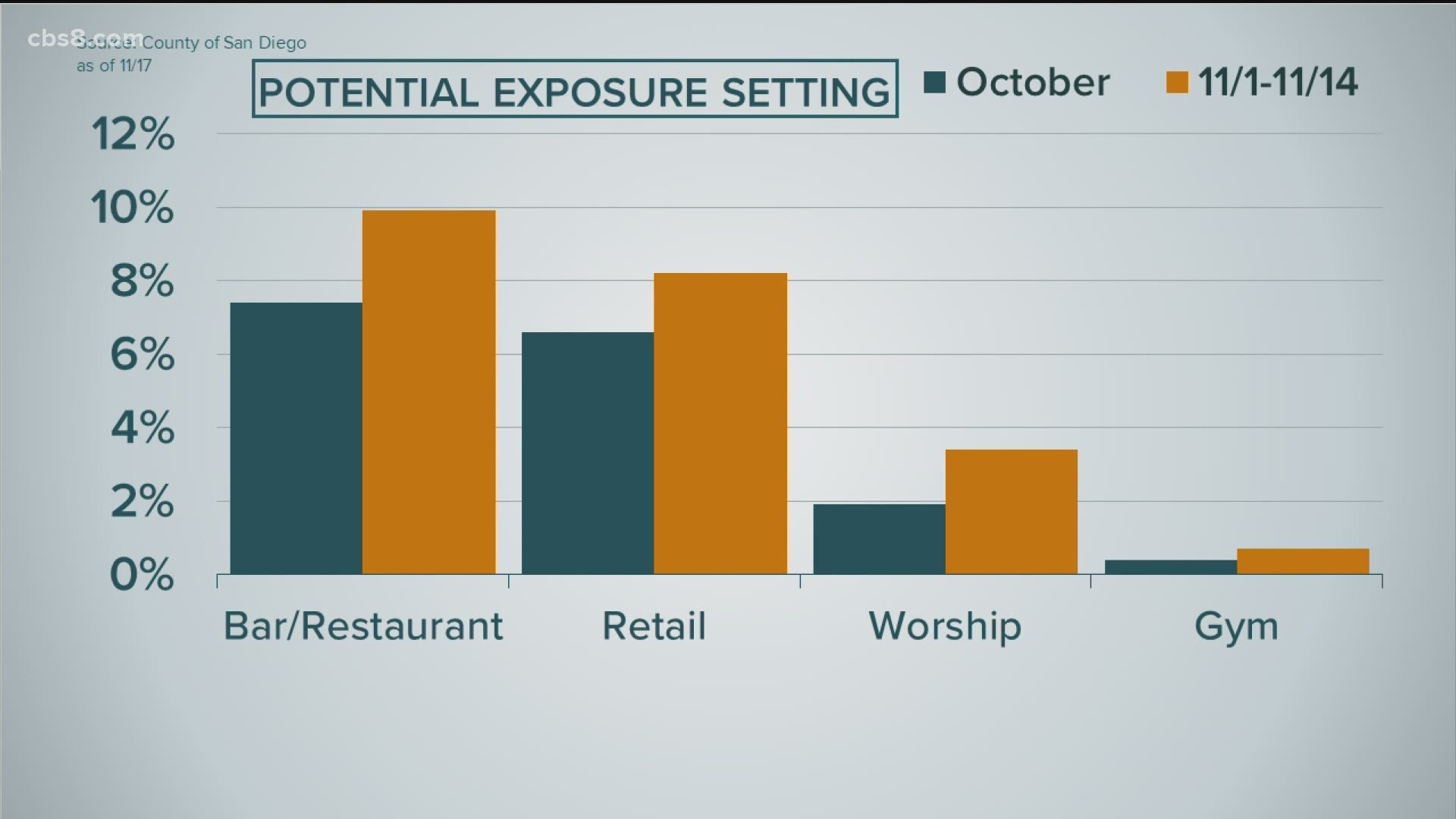SAN DIEGO — The San Diego County Board of Supervisors received a barrage of criticism during its meeting Tuesday from frustrated business owners who were upset about the new coronavirus restrictions.
The county was moved into the purple tier last week after its case rate continued to exceed the limits of the red tier. The move pushed restaurants, gyms and places of worship outdoors and further restricted indoor capacity for retail stores and other businesses.
“The bottom line is the daily average of cases is rising at astonishing rate. It is important we all collectively act quickly to change behavior,” stressed Wilma Wooten, M.D., M.P.H., the county’s public health officer. “All age groups and sectors are now seeing an increase in cases with no single driver responsible for the surge in our cases.”
Several critics and supervisors questioned whether the purple tier restrictions were necessary and pointed to an adjudication request filed by Wooten earlier this month in an unsuccessful effort to keep the county in the red tier.
“Based on the case data for October, it is clear that San Diego’s increased cases are not due to the sector closures impacted by moving into a more restrictive tier,” wrote Wooten on Nov. 5.
At the time, 7.4% of cases had potential exposure settings in restaurants/bars, 6.6% in retail stores, 1.9% at places of worship and 0.4% in gyms.
The state rejected the adjudication request and all four of the sectors increased their share among all potential exposure settings in the first two weeks of November as cases spiked.
In the last two weeks, 9.9% of cases had potential exposure settings in bars/restaurants, 8.2% in retail stores, 3.4% in places of worship and 0.7% in gyms.
Workplaces and household exposures represent the largest sources of potential exposure at 34.6% and 34.3% respectively. However, the county notes workplaces may include some of the aforementioned businesses and household exposures may not be independently verified.
“What has changed is the increasing number of cases and, across the sectors, those numbers have also increased,” said Wooten when asked about the difference since the adjudication was filed.
HHSA also presented on its increased enforcement efforts since entering the purple tier. Its 24/7 hotline has received an average of 74 calls a day during the past week. It has averaged 47 daily calls since it was started in August.
On Monday, the county served 29 cease and desist orders, representing more than half of the 51 orders that have been issued since the pandemic began. It has also issued seven shutdown orders but did not specify when they were issued.
“While our goal is voluntary compliance, including education and engagement, escalated enforcement has been part of the process,” said Vince Nicoletti, who has worked on the enforcement effort with HSSA. “Preventing even one transmission can not only make the difference between life and death but it can make a difference in livelihoods and the economy.”

